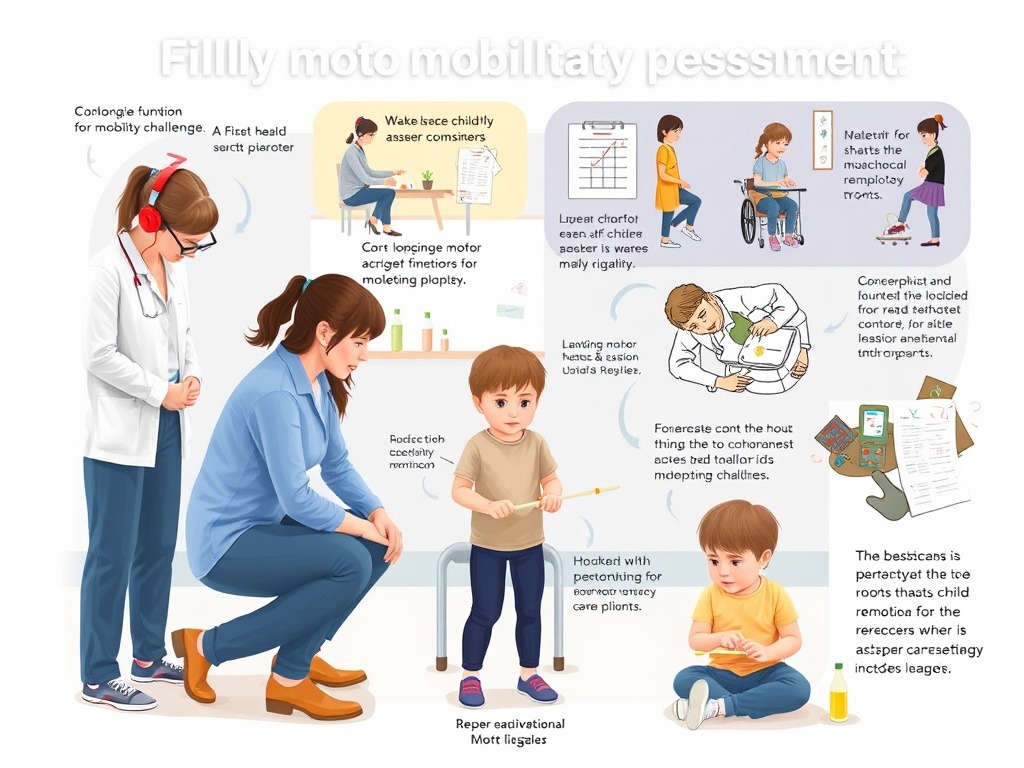Children with mobility challenges require detailed and individualized assessments to ensure they receive the appropriate support and interventions. Clinicians rely on structured classification systems to understand the extent of a child’s motor capabilities and functional limitations. One of the most widely used tools in pediatric rehabilitation is the MFCS, or Motor Function Classification System. This system provides a standardized framework to evaluate and describe how children with mobility impairments function in daily life.
Understanding the Purpose of the MFCS
The MFCS is designed to help clinicians, therapists, educators, and families communicate more clearly about a child’s motor function. Rather than focusing solely on a medical diagnosis or specific impairments, the MFCS emphasizes what the child is able to do in real-world environments, particularly in relation to sitting, walking, and moving independently.
By categorizing a child’s functional motor skills into defined levels, the MFCS helps guide clinical decisions, therapy goals, and assistive equipment recommendations. It also plays a critical role in educational planning, long-term care strategies, and research.
Levels of the MFCS: A Functional Overview
The MFCS typically uses a five-level classification scale, with each level describing a child’s gross motor function in increasing detail. These levels are not based on age or diagnosis, but on actual motor performance, especially in everyday settings such as school, home, or playground environments.
- MFCS Level I: The child walks without limitations and can perform most gross motor skills, such as running or jumping, though speed and coordination may be reduced compared to peers.
- MFCS Level II: The child walks with some limitations, particularly on uneven surfaces or in crowds. They may need assistance with more complex movements or longer distances.
- MFCS Level III: The child walks with a hand-held mobility device and may use wheeled mobility for longer distances or outdoor settings.
- MFCS Level IV: The child relies on wheeled mobility in most settings and has limited self-mobility. Some assistance is needed for transfers and postural control.
- MFCS Level V: The child is transported in a manual wheelchair in all settings and has limited ability to maintain head and trunk posture or control limb movements.
These levels are descriptive, not prescriptive. Clinicians use the MFCS to summarize current abilities, but they also recognize that function can change over time with therapy, growth, or interventions.
Why the MFCS Matters in Clinical Practice
Using the MFCS helps ensure that clinicians adopt a consistent, holistic approach to assessing children with motor challenges. Since mobility is critical for participation in education, social interaction, and daily living activities, accurately classifying motor function helps in multiple ways:
- Intervention planning: Knowing a child’s MFCS level informs decisions about physical therapy, occupational therapy, and assistive devices.
- Communication: It allows professionals and families to speak a common language, reducing misunderstandings about a child’s needs.
- Goal setting: The MFCS helps clinicians set realistic, measurable goals based on the child’s current functional level and potential.
- Tracking progress: Over time, clinicians can use MFCS levels to monitor improvements or changes in motor function.
- Resource allocation: Schools and service providers can better allocate support when they understand the child’s MFCS classification.
Who Uses the MFCS and How Is It Applied?
The MFCS is typically used by physical therapists, occupational therapists, pediatricians, and rehabilitation specialists. It is often introduced during early evaluations for conditions such as cerebral palsy, spina bifida, muscular dystrophy, or developmental delay. However, it’s applicable to a wide range of diagnoses affecting motor function.
Assessments are based on clinical observations, reports from caregivers, and sometimes video analysis. The goal is to determine how the child functions in everyday life, rather than focusing only on what they can do in a clinical setting. This functional focus ensures that the MFCS remains a practical tool that translates directly to real-world outcomes.
MFCS and Other Assessment Tools
While the MFCS is highly effective on its own, it is often used alongside other assessment tools. These may include the Gross Motor Function Measure (GMFM), Pediatric Evaluation of Disability Inventory (PEDI), or assessments specific to fine motor or cognitive skills. When used together, these tools provide a comprehensive picture of the child’s abilities and needs.
The MFCS also complements family-centered care models. By involving parents and caregivers in the assessment process, clinicians can ensure that the chosen interventions reflect not just medical necessity, but also family priorities and lifestyle.
Conclusion
Classifying motor function accurately is essential for developing effective care plans for children with mobility challenges. The MFCS offers a clear, standardized way to assess and describe gross motor abilities in daily life, helping professionals and families work together toward meaningful goals.
By focusing on what children can do—not just their diagnosis—the MFCS empowers clinicians to provide targeted support that enhances independence, participation, and quality of life. As a functional, widely adopted tool, the MFCS remains at the heart of pediatric mobility assessment and intervention planning.


